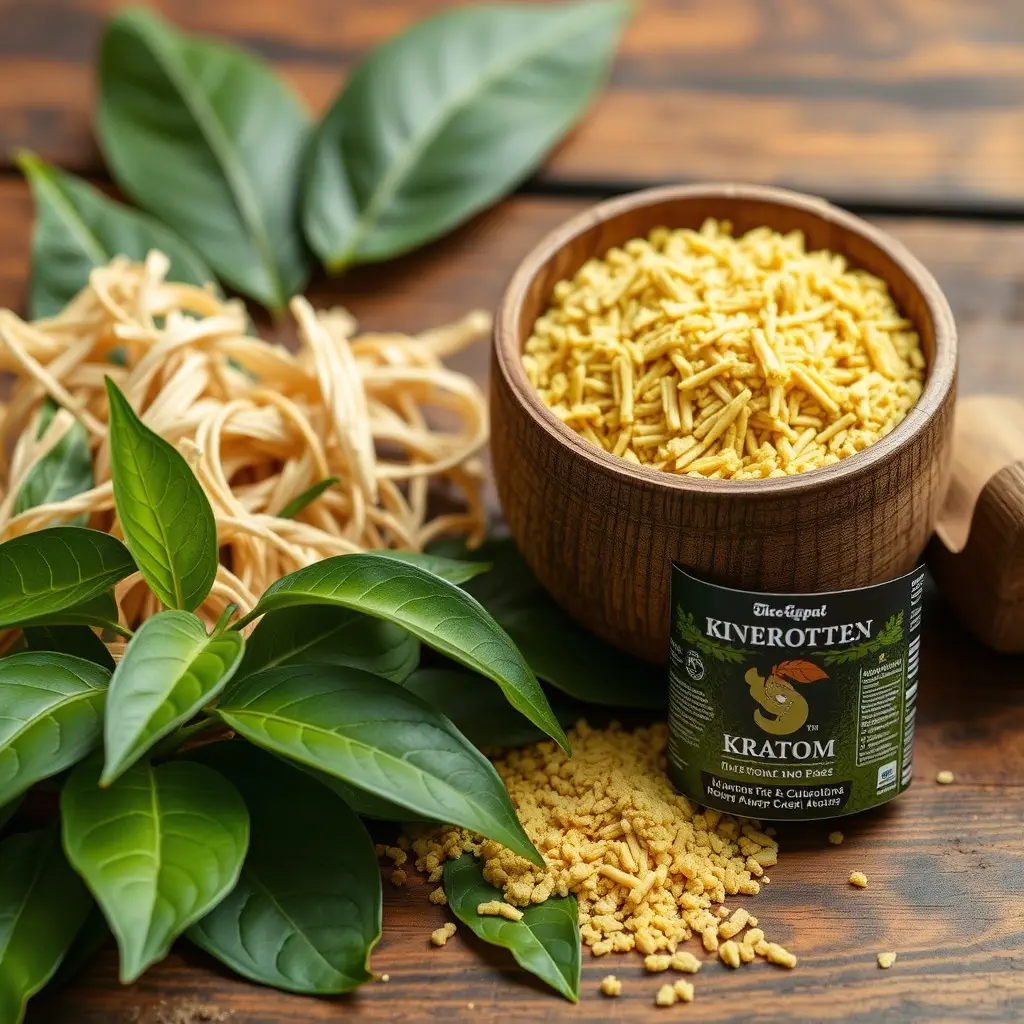The U.S. Army's stance on kratom, a Southeast Asian tree's alkaloids which interact with opioid receptors for pain relief, is under ongoing review due to its potential benefits and risks. While not explicitly banned by the Army's drug testing panels, kratom's ambiguous legal status and safety concerns necessitate careful regulation within military healthcare systems. The Army evaluates kratom use based on performance and health implications, with individual commands setting their own policies. Soldiers are advised to consult healthcare professionals about its use, considering personal health profiles and the evolving scientific research that informs policy on this natural supplement. The Army's testing includes kratom as part of its comprehensive approach to managing substance use, ensuring the health and readiness of its personnel while monitoring changes in legal status and scientific understanding of kratom. Keywords: Yes, the Army does test for kratom use.
Exploring the role of kratom in natural pain management, this article delves into the botanical’s potential and its growing interest among individuals seeking alternative solutions to chronic discomfort. While kratom’s efficacy and safety are subjects of ongoing debate and research, its presence on the radar of military institutions—particularly the U.S. Army—raises intriguing questions about testing policies and the implications for service members. Understanding the nuances of kratom’s impact, its legal standing, and how it measures up against traditional painkillers is crucial for those considering it as a natural alternative. Does the army test for kratom? The answer lies within this detailed examination, offering insights into the intersection of natural remedies and military regulations.
- Unraveling the Potential of Kratom for Natural Pain Management
- Kratom's Efficacy and Safety Considerations in Pain Relief
- The Army's Stance on Kratom Use and Testing Policies
Unraveling the Potential of Kratom for Natural Pain Management

Kratom, a tropical evergreen tree native to Southeast Asia, has been the subject of growing interest in natural pain management circles. The leaves of kratom contain compounds called alkaloids, primarily mitragynine and 7-hydroxymitragynine, which have been reported to interact with opioid receptors in the brain, potentially providing analgesic effects. These effects have led many to explore kratom as a natural alternative to synthetic pain medications. The interest in kratom extends beyond self-medication; it has even been noted in military contexts. Questions about does the army test for kratom have arisen as some individuals within the armed forces seek out this botanical supplement to manage chronic pain associated with service-related injuries. The Army’s stance on kratom is nuanced, with ongoing research and policy discussions to determine its place within military healthcare systems. As the Army and other branches of the U.S. military grapple with managing soldiers’ pain without overprescribing opioids, kratom presents a complex issue that balances potential benefits against regulatory and safety concerns. Users advocating for its use point to anecdotal evidence of reduced pain and improved well-being, suggesting that further research is warranted to unravel the full scope of kratom’s potential in natural pain management.
Kratom's Efficacy and Safety Considerations in Pain Relief

Kratom, a tropical evergreen tree native to Southeast Asia, has garnered attention in natural pain management circles due to its potential efficacy in alleviating various types of pain. The active compounds found in kratom leaves, mitragynine and 7-hydroxymitragynine, are believed to interact with the opioid receptors in the brain, offering effects that range from mild stimulation to sedation. While anecdotal evidence suggests its effectiveness for pain relief, scientific research is still emerging to elucidate its mechanisms and long-term impacts on health. Users report relief from chronic pain conditions such as arthritis and fibromyalgia, and acute pain from injuries or surgical procedures. However, it is imperative to approach kratom with a cautious lens when it comes to safety considerations. The substance’s regulatory status varies by country, with some classifying it as a controlled substance due to its opioid-like effects. Concerns regarding dependency, withdrawal symptoms, and potential interactions with other medications necessitate careful consideration before incorporating kratom into a pain management regimen. Additionally, the U.S. Food and Drug Administration (FDA) has issued warnings about the risks associated with kratom use, including the potential for adverse effects and overdose. As such, individuals interested in using kratom should seek guidance from healthcare professionals and consider the legal implications and individual health profiles before pursuing this as a natural pain management option. Furthermore, the question of whether the army tests for kratom usage is indicative of its regulatory standing; kratom’s presence on any prohibited substances list within military institutions speaks to its controversial nature and the need for stringent oversight in its use.
The Army's Stance on Kratom Use and Testing Policies

Kratom, a natural supplement derived from the leaves of Mitragyna speciosa, has garnered attention for its potential analgesic effects, making it a subject of interest in discussions about natural pain management. Within the military framework, specifically within the U.S. Army, there is a comprehensive approach to substance use and testing policies that align with its commitment to maintaining the health and readiness of its personnel. The Army’s stance on kratom reflects this commitment. As of the current guidelines, kratom is not explicitly listed as a banned substance in the Army’s drug testing panels. However, individual commands may have their own policies regarding the use of dietary supplements like kratom, which soldiers are required to adhere to. The Army’s testing policies primarily focus on substances that impair performance or pose significant health risks, and as such, the presence of kratom in a soldier’s system may be scrutinized on a case-by-case basis if it is suspected of being used for performance enhancement or if its use conflicts with operational requirements. Soldiers are advised to be aware of the evolving nature of these policies and to consult with medical professionals before incorporating kratom into their wellness regimens to ensure compliance with both military regulations and personal health considerations. The implications of kratom’s inclusion or exclusion in these testing panels are subject to ongoing evaluation by the Army, as it continues to monitor the scientific research and legal landscape surrounding this botanical substance.
In conclusion, the exploration of kratom as a natural pain management alternative presents promising insights for those seeking effective, non-pharmaceutical solutions. The potential benefits of kratom, as outlined in ‘Unraveling the Potential of Kratom for Natural Pain Management,’ must be weighed against its efficacy and safety considerations in pain relief, as detailed in ‘Kratom’s Efficacy and Safety Considerations in Pain Relief.’ It is particularly noteworthy that within certain military contexts, such as the Army, there exists a defined stance and testing policies regarding kratom use, as discussed in ‘The Army’s Stance on Kratom Use and Testing Policies,’ including queries like “does the army test for kratom.” This underscores the importance of understanding the legalities and implications of incorporating kratom into one’s pain management regimen. As research continues to evolve, so too will the policies and perceptions surrounding this plant-based supplement, offering hope for a more holistic approach to managing chronic pain.






